* (restored)
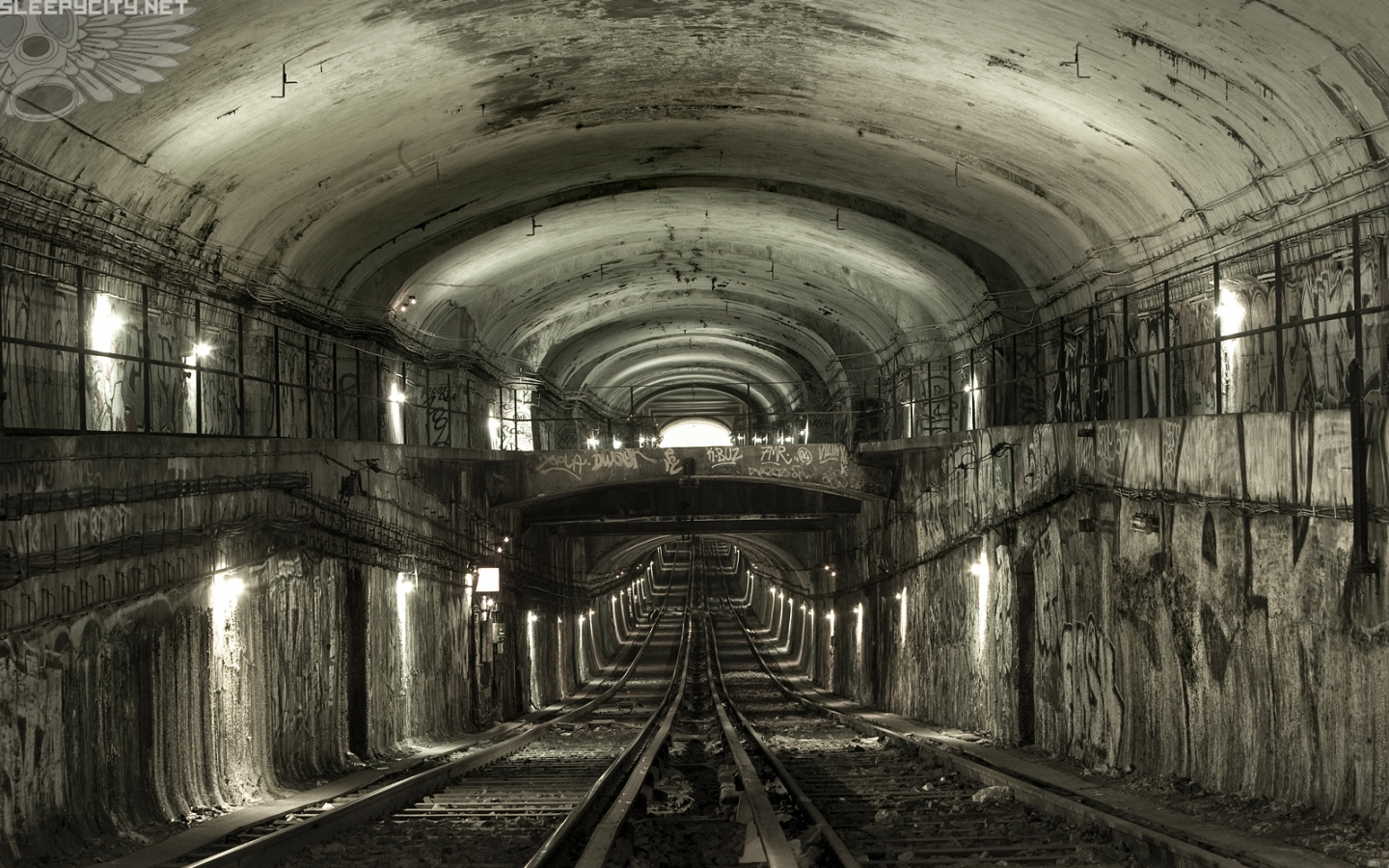
I have a complex relationship with cities. Growing up in a small rural town in Victoria, Australia the city, in this case Melbourne, was something big full of adventure in the distance horizon. On the other hand living in a city I find the noise, the volume of people overwhelming at times. Place me in the bush, surrounded by nothing but trees and the sounds/silence of it and I’ll feel at ease; place me on a busy street of a city and I feel myself shrinking into myself, retreating.
As a young man in my early 20’s, now living in Melbourne, I discovered urban exploration. In those drains, under those bridges, in those abandoned carparks, I found that silence. Lately,-partly out of inspiration for an idea brewing in my mind, partly out of reflection on graduating on a teacher and the responsibility that working in that field brings with it- I’ve been reflecting back on this period.
The following is a compilation of that reflection and research, starting with the local and moving to the global.
Cave Clan
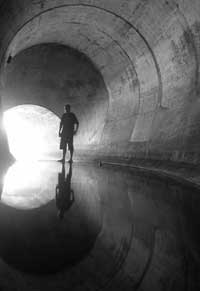
The Cave Clan is an Australian urban exploration group that begun in 1986. The major branches are in Melbourne and Sydney although there is exploration in most major cities of Australia. It was through the Cave Clan that I got into urban exploration. A friend and myself met them outside the
Although the major exploration group exploration has been going on for longer then the Cave Clan has existed. On a number of occasions whilst exploring I have spotted graffiti dating from the 1960’s. So its fair to say that whilst Cave Clan has been around since the mid 80’s urban exploration in the drains of Melbourne has been around longer.
Personal Experiences (words)
Melbourne Underground
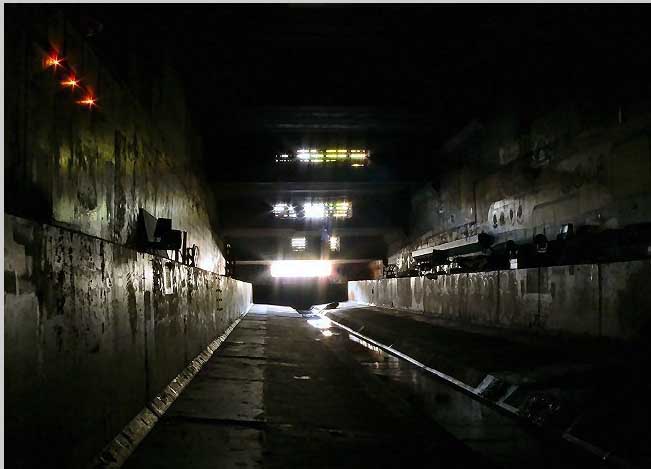
On the surface Melbourne is a lively metropolis, but you have to wonder what lurks beneath this city. When typical tourists enter the city of Melbourne, known for its culture, art and spectacular gardens, they are unaware of the fact that like most other large urban cities, there is a vast network of underground tunnels, drains and cavities, twisting and turning in all directions under the busy streets. A different world exists beneath the feet of those who walk the streets of the city and, like the tourists, most Melbournians who live on the surface on the streets are also completely oblivious to this underground drainage system and unused old spaces. What is not seen is often ignored. But this extensive network of stormwater drains and cavities capture the essence of cramped, dark and damp interiors that can be explored and discovered by anyone who dares to enter this underground world. read the rest here.
Ghost Platforms
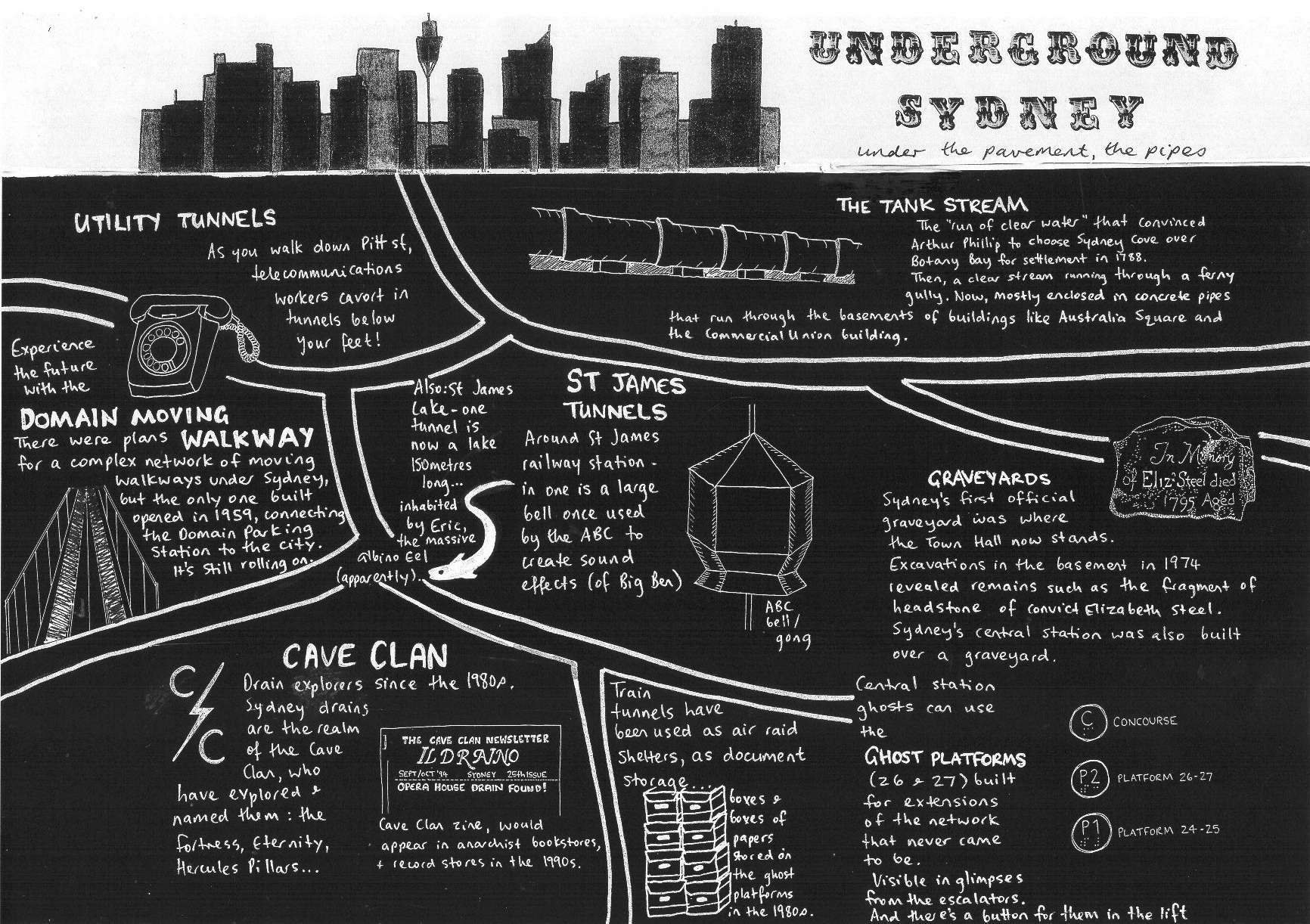
Travelling on the escalators that lead down to platforms 24 and 25 at Central station, I always look out for the ghost platforms. They are visible in glimpses through the gaps in the striped panels that enclosed the escalators, but only for a moment, as the escalators keeps moving onwards, down to the Bondi Junction line, or up to the ticket gates.
While thousands of people pass by them every day, the majority without knowledge of their existence, the ghost platforms remain still and undisturbed. What is mostly visible from the gaps in the panels are the station’s lights, which continue to shine even though the platforms are unused read the rest here.
How do I find explorable drains?
To find drains you can use a number of methods, all of which are suited to different areas.
1) Get a topological map. Likely drains are where there are gullies but no evidence of a river per se; deduction: it has been buried (turned into a drain tunnel) or its headwaters have been `pirated'(diverted) to another river or into a drain further upstream. Melb Clan found Gobledox this way.
2) Obtain old street directories and compare them to their newer editions. Generally you find that when a creek shown in an old directory is no longer shown in a new edition, chances are that it has been entunneled. Also if you see a creek going along and suddenly disappearing, then reappearing somewhere else, you know pretty well what happened to it in between. I found the entrance to a whopping drain in Brisbane by looking in the Gregory’s for wide creeks which disappeared adjacent to roads.
3) Check boundaries on cadastral maps. Back in the good ol’ daze, postcode boundaries were often delineated by prominent geographic features, like cliffs, rivers and the like. Thus you can look in street directories or maps of who-owns-what (cadastral maps) and occasionally see non-linear, erratic-looking postcode boundaries. Odds on it is where there once was a river. This is how The Loaf was located. read the rest here.)
Into the warren (photo gallery)
Melbourne
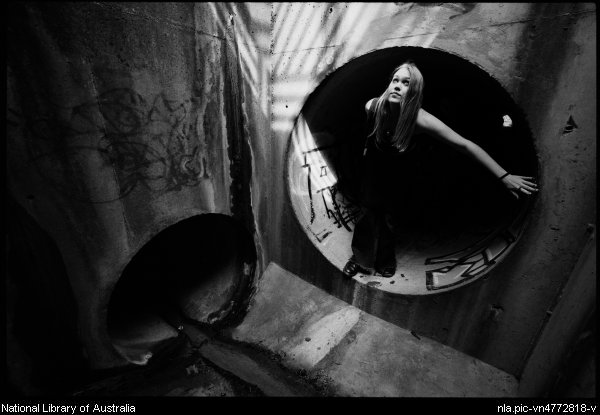
Hobart
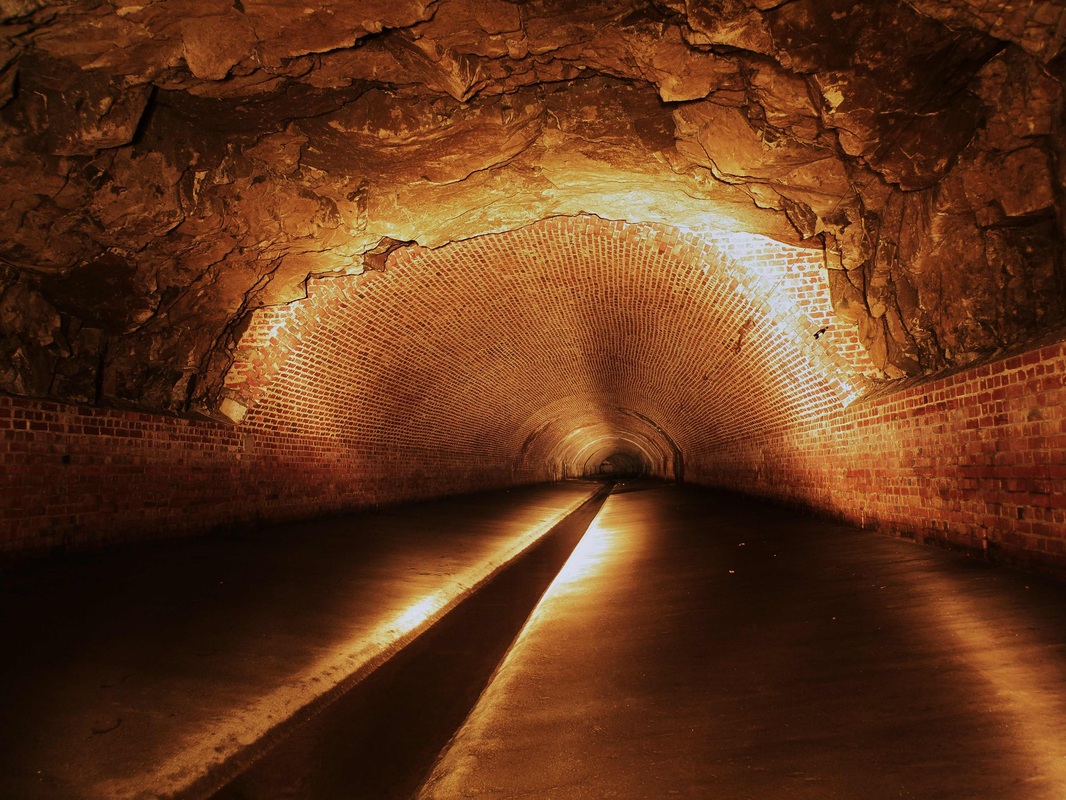
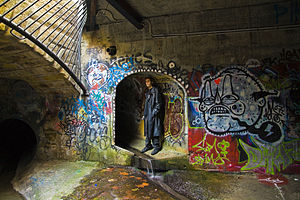
Fremantle
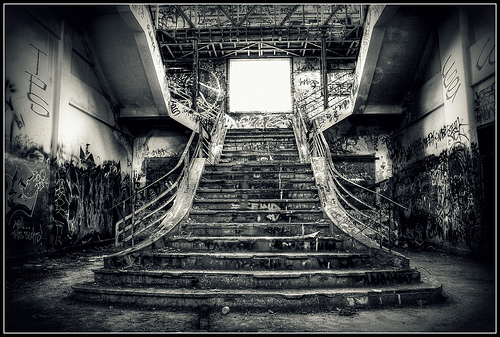
She Becons: Brisbane
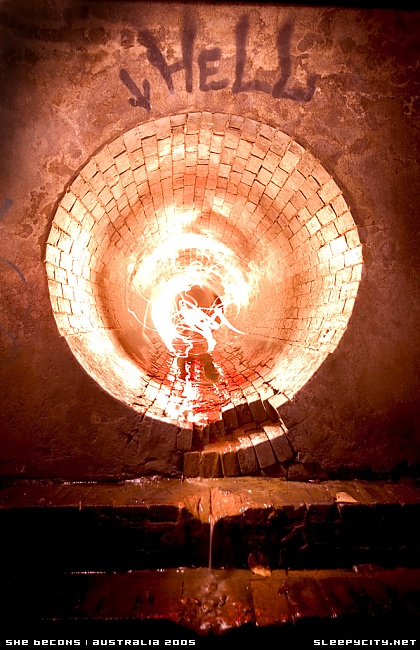
Sydney
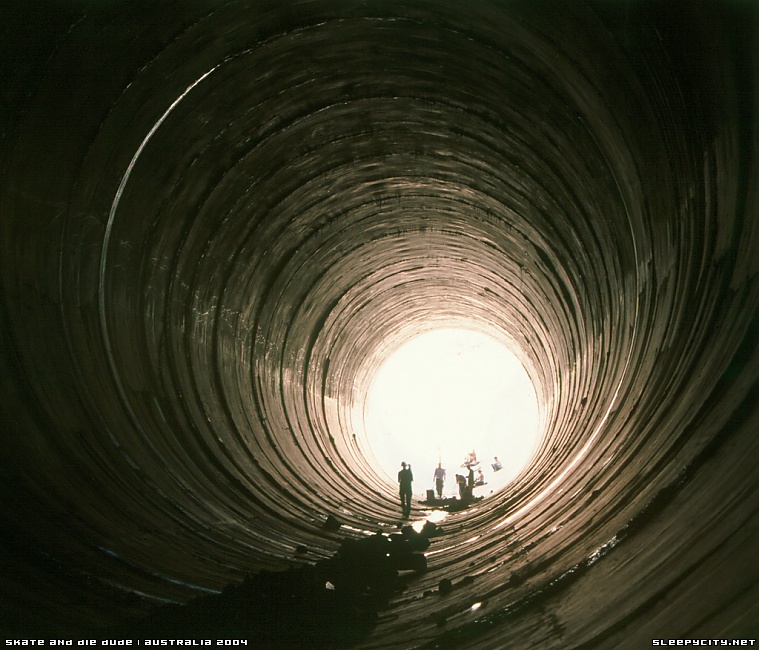
Light Painted Tunnels
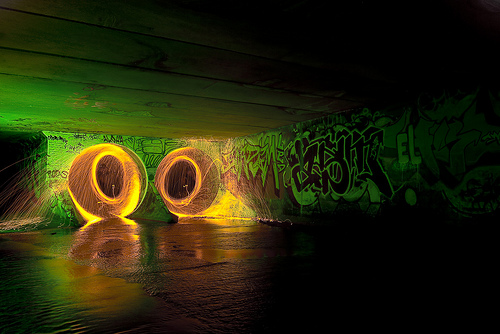
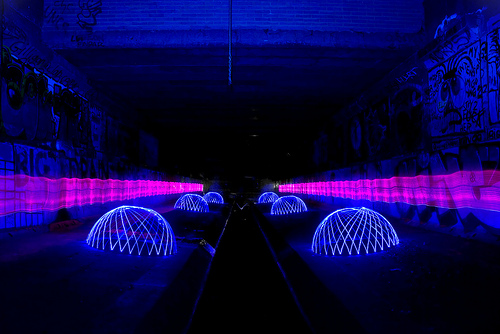
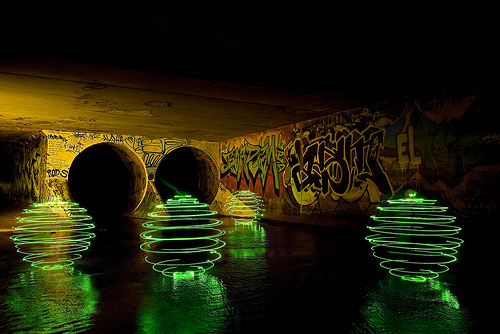
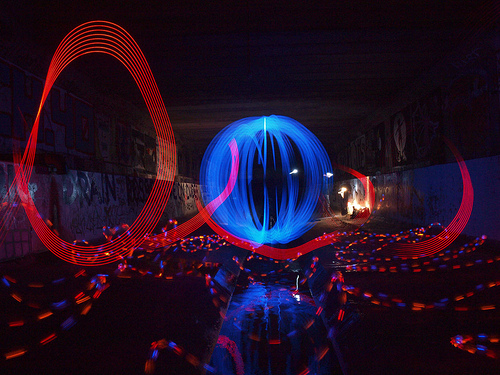
Around the World
Sleepycity: demolition of paris metro

Over the next few years we were enslaved like only those who grew up in a city deprived of metro could be. Week in week our we hit the tunnels, scouring our maps and coming up in the early hours smeared from head to toe in that thick black dust which never fully washes from your clothes. I would wake the morning after with that distinctive smell still hovering in my nostrils, for imbued was it into the fabric of all my clothes, my sheets and my hair. The thick slabs of scunge under our fingernails was like a badge of honour, the black tinge in the folds between thumb and index finger which never faded a symbol of dedication. The symptoms pervaded our appearance, our speech and our dreams. To us the system was an open slate ripe with possibilities. We could only oblige by beginning to dismantle it piece by piece….
Arsenal, Champ de Mars
The stations Arsenal and Champ de Mars are the easiest to visit as they can be reached from the topside so they’re as good a place to begin as any. While situated at opposite sides of the city these two stations share a similar story. They were closed on the same day, 2nd September 1939, when the metro employees were recruited to join the war effort. Read the rest here.
Vanishing Point: Canadian exploration
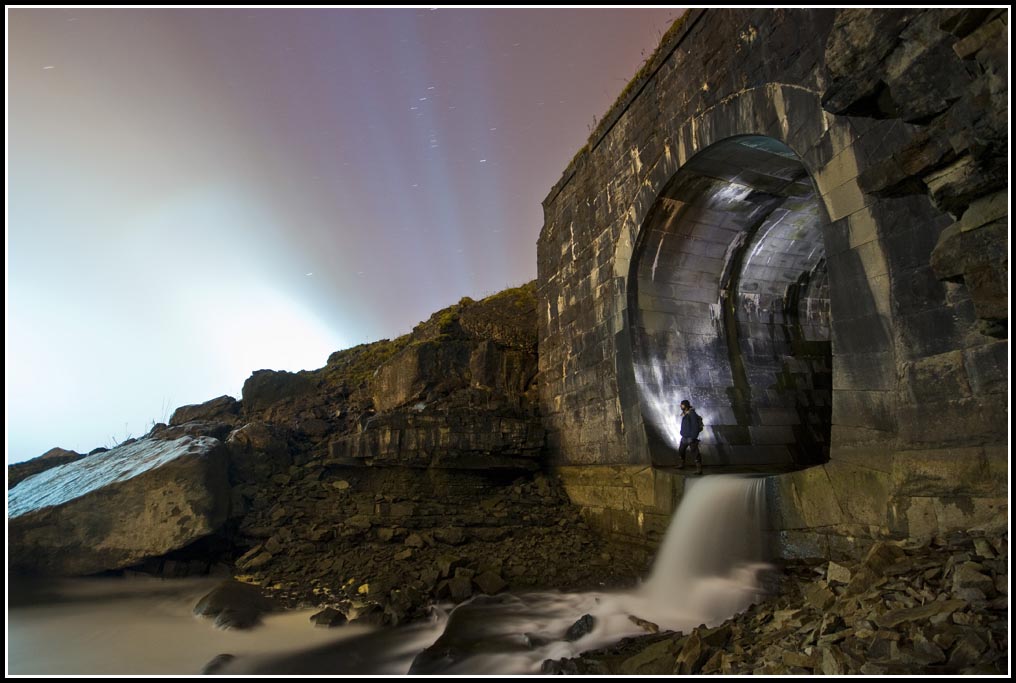
At their root, most drains are just an abstract version of the watershed that existed before the city. It’s sort of this alternate dimension that you pass into, when you step from the aboveground creek, through the inlet, into the drain – especially once you walk out of the reach of daylight.
Even sanitary sewers often follow the paths of existing or former watersheds, because the grade of the land is already ideal for water flow – fast enough, but not so fast that it erodes the pipe prematurely – and because the floodplains are often unsuitable for other uses.
BLDGBLOG: How does that affect your attitude toward this, though? Do you find yourself wishing that all these drains could be dismantled, letting the natural landscape return – or, because these sites are so interesting to explore, do you actually wish that there were more of them?
Michael Cook: It’s an awful toll that we’ve taken on the landscape – I’m not one to celebrate all this concrete. If it were conceivable to set it all right, I’d be the first one in line to support that. And the marginal progress being made in terms of environmental engineering – building storm water management alternatives to burial and to large, expensive pipes – is a great step forward; unfortunately, its success so far has been limited.
Ultimately, you just can’t change the fact that we’ve urbanized, and we continue to do so. That comes with a cost that can be managed – but it can’t be eliminated completely.
Read the rest of the interview here or visit the vanishing point website
Under city: Steve Duncan new york explorations
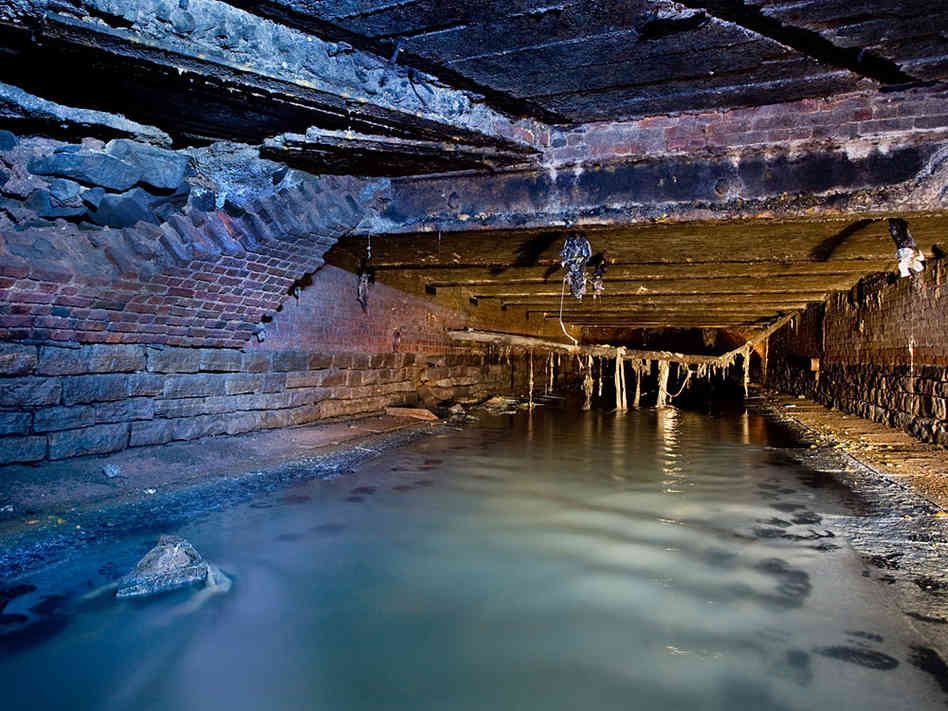
The hole I was digging was about three feet deep and halfway under the wall when I ran into a tarpaulin imbedded in the dirt. It caught at my shovel strangely, and I couldn’t tell what I’d run into in the nighttime darkness until I took out my flashlight. I knelt down next to the hole to see.
The beam of my flashlight showed the dirty blue plastic and then, as I prodded it with the shovel, I saw a half-rotten shoe sticking out of the worm-infested folds. A dead body. The idea filled my mind with a sudden wave of revulsion and horror. For a moment I couldn’t move. Then I reached out and slowly pulled on a corner of the tarp. The shoe tumbled out, attached to nothing, and behind it there was only dirt.
I let out a breath… read more here and check out some photos here.
The Post Office Railway
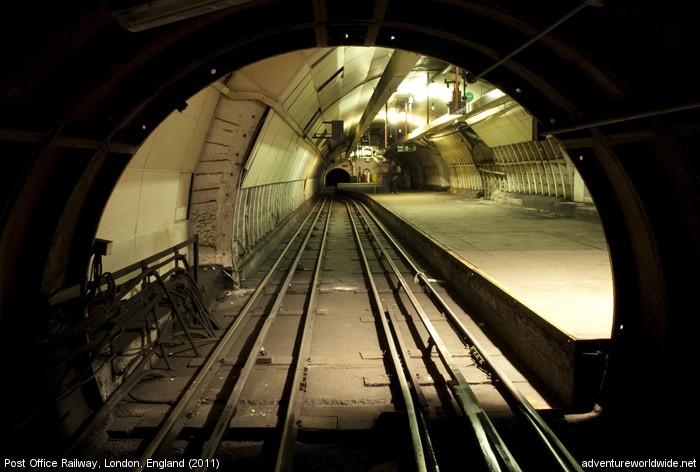
I had the same experience with the exploration of sewers. Back in 2005 I would crawl on my hands and knees squeezing my way up a 3ft, never-ending concrete pipes only to find a dead end or smaller tunnel, but I enjoyed it, going back for more week after week. Yet after discovering some of the Victorian lost rivers and storm drains, this once enjoyable activity instantly lost its appeal, in fact it became frustrating. I could do this now anyway because I’m fatter then I was six years ago and no longer fit in said 3ft pipes, but now I don’t even consider them an option or viable route. I guess I became a ”Sewer Snob”, if there is such a term, spoilt by bigger and better things. In fact it’s been the same across the entire board of exploration. Asylums, mills, bunkers, forts, all things I once enjoyed with equal passion, now nothing more then a space to kill some time. But then there was always Mail Rail, lurking in the background. Read the rest here.
Felix Nadar and the Paris Sewers
It’s not often that our explorations are more connected to people than places. However, on a recent trip into the Paris sewer system, we were chasing the ghost of the Parisian eccentric and urban photographer Félix Nadar. For urban explorers in London and Paris, the period between 1850 and 1870, when Nadar was doing his work, is a crucial one. During that time, both of the drain networks were built to the rough configuration in which they remain. This period was pwned by urban planners and engineers like Bazalgette and Haussmann; it was a time of radical urban reconfiguration. Nadar was fascinated by the changes and spent a great deal of time photographing the Paris catacombs and sewers (and taking aerial and erotic photos, but that’s another story), leading many urban explorers to think of Nadar, and his contemporary John Hollingshead in London, as the first drainers. The name Félix Nadar was even a pseudonym – clearly Nadar was part of our crew! Read more on Felix Nadar and the history of paris sewers here and here.
And some of his photos:
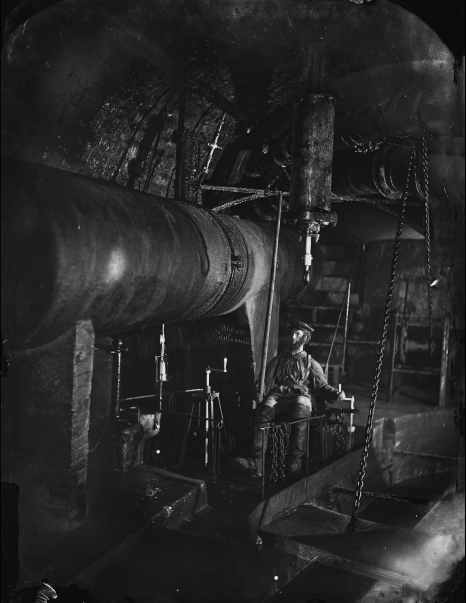
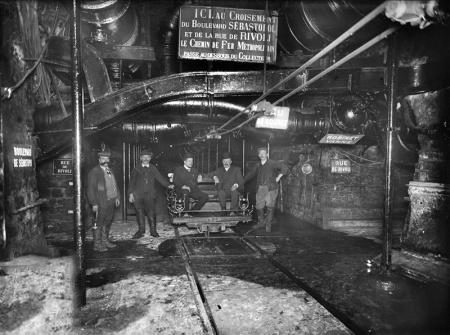
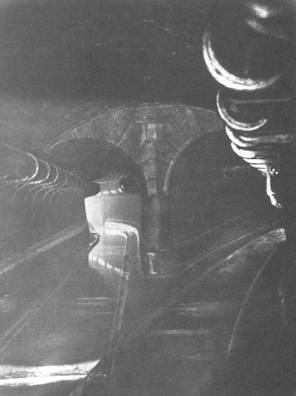
A short world gallery
Canada
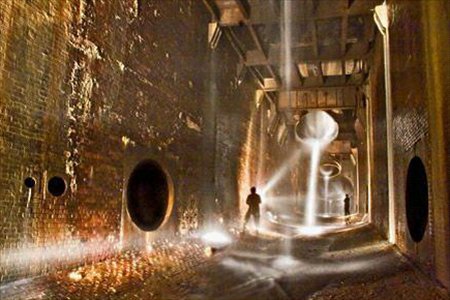

France
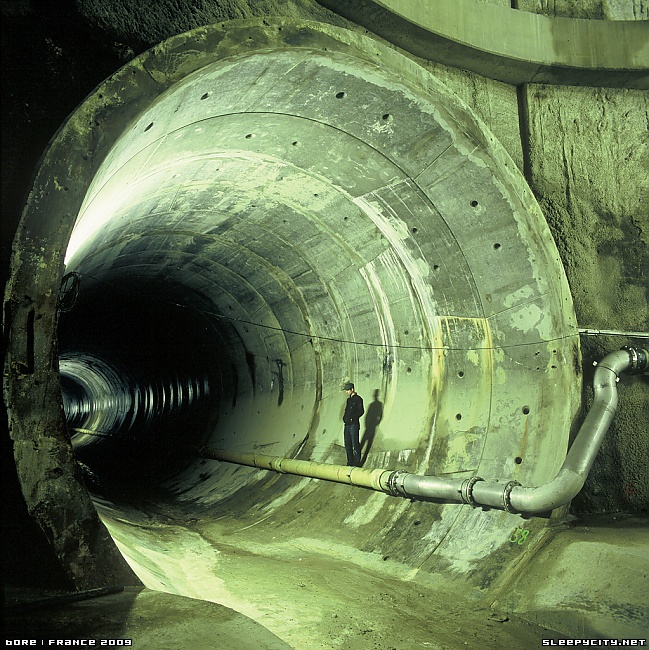
Bore
England
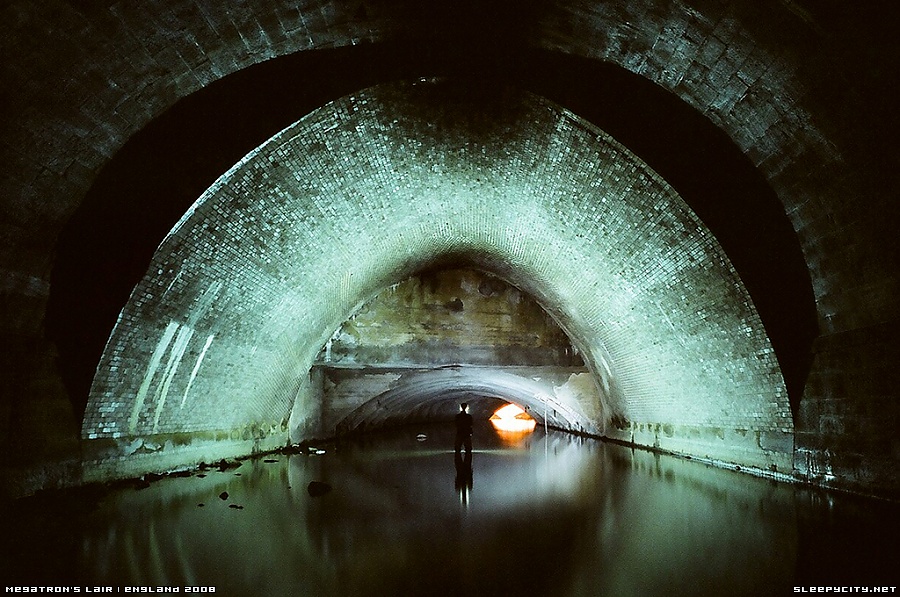
Balkans
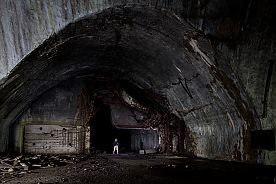
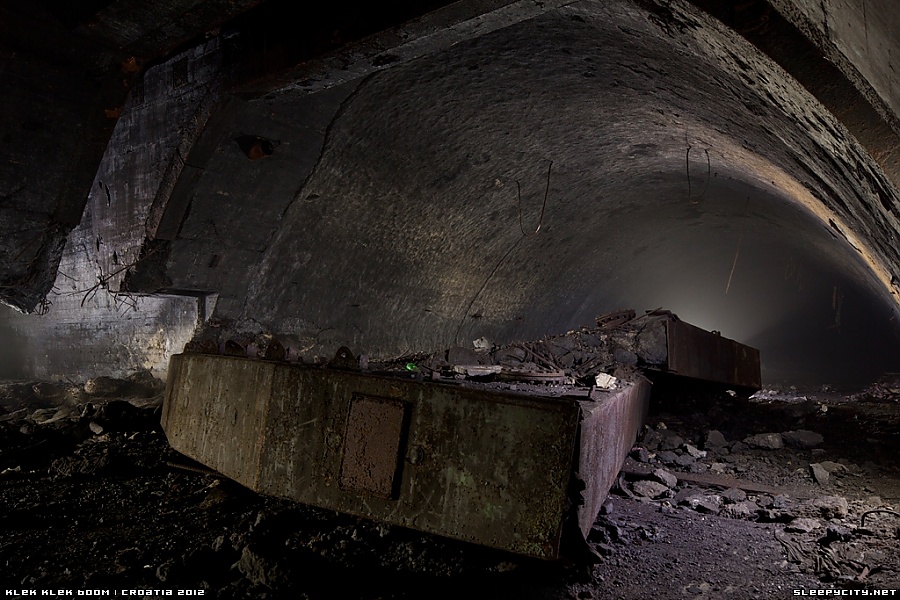
Videos
*
p.s. RIP David Berman. ** Bill, Hi, Bill. Yeah, death death. Now David Berman. Were you ever into Silver Jews? Zac and I checked out that same big gallery complex when we were there. Must not have been much excitement art-wise since I only remember the building. David Zwirner is opening a Paris gallery next month. Another incursion from the giants. But at least he’s opening with a Pettibon show. ** Quinn R, Hi, Quinn! Really good to see you! Coincidentally, I just read an older piece of yours the other day on Fanzine, ‘Drop Out of Life’. Really liked it! My summer was kind of weird. Kevin’s death and then the death of another close friend around the same time under almost the same circumstances. Otherwise, it was okay, productive enough. Jeez, your summer sounds weird like mine. Assuming the ER got you right again pretty quickly, that’s a scary moment and a lucky break (non-break?). I’m glad you’re feeling better, and dating is obviously a plus thing to be doing. I have read ‘The Babysitter at Rest’, yes. I liked it very much. The press that published the book, Dorothy, is probably my favorite extant press right now. Just one terrific book after another. LA! I love the place. It’s really hard to know. Some people fall in love with it, and some just can’t deal with it at all. Have you visited there? It’s super particular. As someone who doesn’t need or want to socialise a ton, it was/is fine for me because you get a lot of work done due to how home-based life can be there. Not that it’s not possible to heavily social too. Without a car, it is harder to live there in some sense. Although I know a lot of people who live there with a car. The bus system functions but is not amazing. Uber would likely be a very go-to transportation method if you don’t drive. As a writer, it’s great for the reasons I said. It’s easy to isolate and dig into your writing and avoid distraction. I was and am always quite productive there. And there’s a nice writing scene there with some cool venues, meet-up places, etc. I’m happy to tell you more if you want to hear more. Are you working on anything at the moment, writing- or art-wise or anything? Hope to see you again soon. ** David Ehrenstein, Got the post restored. It’ll be up in a couple of weeks. ** Steve Erickson, Yeah I read that about the Morris doc. Good, about fucking time. I … don’t think I’ve done a sleep paralysis post, no. You want to make one? ** _Black_Acrylic, I would assume the classic fan letter is pretty much a dead duck sadly. But maybe not. Maybe it’s just become a niche thing like cassettes or something. ** Misanthrope, I did used to get some pretty interesting and even controversial fan letters back in the analogue days. I like your attitude and drive re: your new novel. I don’t think you even need external pressure. I just restarted my novel at long last the other day. You’ll definitely beat me to the finish line though. ** Right. I’ve restored this old and really fantastic, I think, post by Paradigm who used to be a omnipresent d.l. back in the day. Heads up, Paradigm, if you’re looking in. Enjoy the post, everyone. See you tomorrow.




 Now available in North America
Now available in North America 
This & yesterday’s posts are wonderful and humorous. I’m always concerned about the divide between the on – top and the under – neath, and it seems a consistent preoccupation of this blog and it’s lovely to have something state its intent so clearly. I’ve been doing some academic reading lately about the transition of “articulation” and ability to speak (as a minority, as a majority, etc.) from the ‘local’ to the ‘global’ so this post’s ordering from local to global is phenomenal; of course, within these different strata different people have different abilities to speak. It’s all quite concerning but I love that our architecture affords us the ability to think of these things aesthetically – Jeff Jackson’s instagram posts etc. often offer hope in this sense to me too.
How are you?
J
What today is all about
hey dennis! normally i’d be blowing off astronomy but today was my last school day till the next semester. not terribly exciting except that i get two weeks to basically fuck around . the tragedy is this will be (possibly) the hottest week of the year for us. i feel like i mostly only mention the weather…
sure you heard about david berman. very tragic. i had just found a copy of his book ‘actual air’, and was gunna try to drive to one of his shows. still feels strange, and oddly planned. great he was able to release an album before though. still.
so afs is doing a 10th anniversary screener of ‘trash humpers’ in 35mm, the way it was meant to be seen, tomorrow. now that i’ve got no responsibilities probably going to see that then have a night in austin. i’ve been cooped up in my apt for too long.
uhhhh some news i got a few more poems posted on my friends lit mag, here’s a link if you’re interested: https://www.sybiljournal.com/work-2/2019/8/8/4-poems-by-kyle-kirshbom
they’re older and there’s one that’s been edited since i sent them, but they’re also gunna be in the book.
heard you’re working on your newest, must be exciting. anyways take care, have a great weekend, watch some movies, do whatever you do.
@ Paradigm, if you’re here, I enjoyed exploring this Aussie netherworld via your post. Thank you!
Given your interest in haunted houses and the script for your next film, have you heard about HAUNT, a horror movie set in an extreme haunted house written by A QUIET PLACE’s screenwriters and produced by Eli Roth? It opens in the U.S. Sept. 13th.
Having experienced sleep paralysis, delving too far into the subject brings out a fear that it will happen to me again, so I don’t want to do the research necessary to put together a day on it.
Hey Dennis, I can’t say I was a Silver Jews fan, though I’m enjoying some clips as I type. (I actually thought this was David Behrman, who seems to be well…)
These photos are fantastic. Wow! I do keep an eye open for subterranean opportunities, and have fond memories of the complexes under Seattle and Edinburgh, and of course the Catacombs under Paris.
And you’ve probably seen this:
https://www.theguardian.com/environment/2017/sep/12/total-monster-concrete-fatberg-blocks-london-sewage-system
Off to the airport in a few hours. They’re expecting protesters. We’ll see if my flight gets cancelled.
Bill